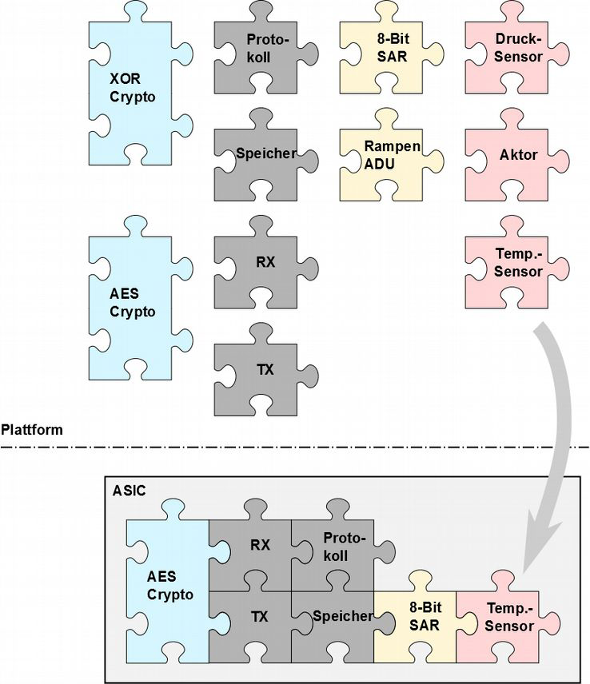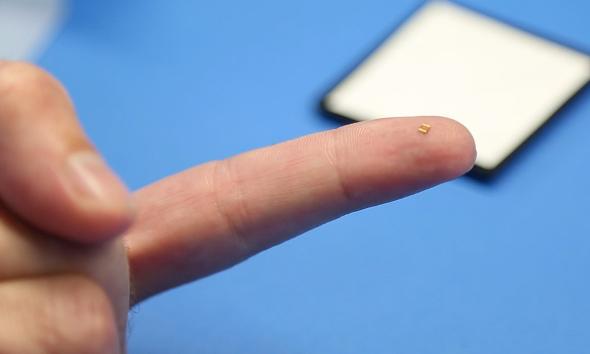Internationale Partnersuche
Innovation & Technologie Angebot
Batteryless communication and sensing platform for Industry 4.0
Country of Origin: Austria
Reference Number: TOAT20180427001
Publication Date: 27 April 2018
Summary
An Austrian University is developing a batteryless sensor chip for wireless communication for a variety of application fields such as industry (Internet of Things). The main advantages of the developed sensor platfrom are the low maintenance costs and a modular design for individual areas of application. Partners are sought from industry and academia under technical cooperation or research agreement.
Description
Batteryless wireless sensors play an important role in the digitalisation of industrial processes (Industry 4.0). Wireless and batteryless sensors offer the advantage that they can be flexibly mounted on moving or hard-to-reach places and that there are no costs for cabling. Biggest challenges by implementing such sensor systems are in the area of reliability and data security. Especially multi-path reflections in industrial environments is a main problem that leads to an unsufficient power supply for the sensors.
An Austrian University has started a project with the goal to develop a flexible and modular ASIC (Application Specific Integrated Circuit) platform for batteryless and wireless sensors. Goal of this project is to minimize the above mentioned problems and secure power supply by implementing a multi-carrier system and developing a low-power circuit concept. The power supply of the chip and the sensors is generated by the electromagnetic wave. This is rectified in the node (of the chip) and is then available as supply voltage to all components.
An increase in spectral efficiency through optimized pulse shaping of the modulated reflection is also part of this project. To ensure data security, several encryption methods that are currently in the standardization process or have recently been published are implemented and analyzed. This should allow an optimal selection of the method depending on the application use-case.
The platform will be realized based on a modular approach. The interfaces of all elements are uniformly defined to allow easy replacement of individual components. As a result, the effects of novel circuit concepts can be assessed directly in the overall system and the system can be quickly adapted for a different application.
The project aims to address the following objectives:
Encryption
- Thorough selection of the right method depending on the application
- Energy-efficient implementation of selected encryption method
- Integration into the overall system
- Increased transmission security through forgery- and tap-proof communication
Efficiency
- Implementation of a high-efficiency rectifier for low input power
- Transmitter for higher-order modulation
+ Increase in data- and reading rate
+ Read out more memory in same amount of time
+ Implementation of a classic transceiver and a 16-QAM transceiver
- Increasing the spectral efficiency through optimized pulse shaping of the reflection
Reliability
- Realization of a multi-carrier system to minimize the multipath influence
Memory
- Implementation of a large memory
- Memory blocks with single and multiple rewritable memory
Sensor and actuator wireless node
- Implementation of multiple sensor interfaces
- Choice of the right interface depending on the application and sensor
- Simple connection of many different sensors
- Implementation of a temperature sensor
- Implementation of an actuator interface (zero power standby)
- Control of a single transistor as switch
Potential application fields of the batteryless wireless sensors:
- Intelligent tools
- Smart building, smart Home
- Access control
- Predictive Maintenance
- Wearables, medical implants
- Logistics
The scientific department of the Austrian University is looking for partners from industry and academia. Industrial partners are sought under technical cooperation agreement to implement, test and further develop the sensor chip in their environment. Scientific partners from University or other R&D Institutions are sought to co-develop the sensor system under research agreement. Research partners from the fields of sensor technology, system integration and software for signal processing are sought to co-develop the technology. Furthermore research partners from other scientific areas are welcome to implement and test the sensor chip in their fields.


Advantages and Innovations
The innovative aspects of a flexible and modular Application Specific Integrated Circuit (ASIC) is the modular approach, a high variability and flexibility with regard to possible applications and a high reliability of the energy supply. Additionally the technology platform development will address the following communication specifications:
- ISO 18000-63 compatible
- safe communication through encryption technology (ISO 29167)
- higher range through innovative circuit design
- higher data rate within wireless communication
The main advantages of the batteryless and wireless sensors are:
- no costs for cabling
- no or low costs for maintenance
- flexible and easy to mount on moving or hard-to-reach places
- economically friendly because no battery needed
- zero power standby
- long service life of the system
Stage Of Development
Concept stage
Stage Of Development Comment
First test-chips will be available on Sept. 2018
Requested partner
The University is looking for partners from Industry and Academia
1) Industry partners should integrate and test the sensor chip in their environment for further development of the product to market maturity.
2) Partners from University and R&D Institutions from complementary research fields (sensor technology, system integration, software for signal processing) are sought to co-develop the sensor platform. Other R&D partners from different areas (e.g. Health) are sought to implement and test the sensor chip.
Cooperation offer ist closed for requests

